The Tiny House Warriors have established a new village in BC’s interior at the site of a planned worker’s camp and are calling land defenders to the area in an effort to stop the Trans Mountain pipeline expansion and assert Secwepemc sovereignty in Secwepemcul’ecw, their unceded territory.
Last weekend’s arrest of Secwepemc Ktunaxa land defender Kanahus Manuel and the subsequent eviction of the Tiny House Warriors from B.C.’s North Thompson River Provincial just outside Clearwater has drawn six or seven land defenders and water protectors from other nations.
Manuel, a member of the Secwepemc Women’s Warrior Society and founder of Tiny House Warriors resistance, was taken into custody by local RCMP officers last weekend, but was released later that day after signing a conditional release “under duress,” she told APTN News Tuesday at the group’s new village in Blue River, B.C.
“They didn’t win, because we’re here and I’m standing on this ground that they forcibly removed my people from [for] hundreds of years — and I’m still standing here. And this is the power that nobody sees.
“They think they’ll break me by arresting me and throwing me in jail…when I didn’t do anything wrong. And they think it’s going to stop me. But it won’t, because we have determination.”
The new village sits alongside an access road on the edge of Blue River, about 100 feet from a family campground and across the road from Kinder Morgan’s planned workers’ accommodation complex.
Three tiny houses are accompanied by four tents, a camping gazebo, and a small kitchen area covered by a green tarp when not in use.
Kanahus and her sister’s children run around with the dog and take short strolls up the road. She is joined by two of her sisters—Snutetkwe and Mayuk—her mother Beverly, children, niece and about a half dozen land defenders and water protectors from the occupied Tongva, Mohawk and Purepecha territories.
Filmmaker Jahnny Lee of the Yong-In Clan Korea Nation, a filmmaker who helped shoot “Akicita: The Battle of Standing Rock,” which premiered at the 2018 Sundance Film Festival, is also at the Tiny House Warriors’ village documenting the resistance.
All of those present at the village are Indigenous.
Just up the road along the Yellowhead Highway motels, tourist lodges and a couple gas stations are the only visible businesses in the town of about 250.
Tourists pass by on their way to Murtle Lake, a popular canoeing destination.
Some stop to ask what the warriors are doing and seem interested. Most just drive by. Vehicles the warriors believe to be unmarked police cars or private security hired by Kinder Morgan pass by a few times a day.
It’s doubtful anyone seeing the Tiny House Warriors know of the Manuel family legacy.
Manuel and the warriors are part of a growing movement of Indigenous peoples in Canada asserting themselves on their land.
They argue that despite its rhetoric Canada has not moved to fully recognize inherent Indigenous rights, title and jurisdiction as mandated by the United Nations Declaration on the Rights of Indigenous Peoples, international law, and by the Supreme Court of Canada.
Manuel’s family has led the fight for rights and sovereignty in Secwepemcul’ecw. Her late father Arthur Manuel, a former Secwepemc chief and international ambassador for Indigenous rights in Canada and abroad, has been described as the “Nelson Mandela of Indigenous Peoples”.
Her late grandfather George Manuel was the first chief of the National Indian Brotherhood.
Kanahus said she is continuing the fight her father and grandfather led.
“I will never live my life and their life in vain, for what they did for us — and not just them but all our ancestors before.”
New village next to Kinder Morgan’s Blue River “man camp”
Kanahus and the others call the proposed Trans Mountain worker’s accommodation complex a “man camp” due to the overwhelming majority of men who typically occupy the facilities.
The site will house up to 1,000 workers, most of them men, for the duration of the pipeline construction phase in the area, which is scheduled to begin in September.
Manuel said the man camps will be just the latest in a long line of such encroachments on Secwepemc territory dating back to the Hudson’s Bay Company and the camps established to build the Canadian Pacific Railway, which helped open up Secwepemcul’ecw to settlers, increased resource extraction, and violence against Indigenous women and girls.
She said some Indigenous women are likely to work in the camps, and that like others she has spoken with they may fear reporting harassment or assault out of fear of losing their job.
“If they come out and they address it then they’re blacklisted from any type of jobs working at the camps anymore.”
A 2016 report from Amnesty International concluded resource development in Northeastern BC is “both fuelling violence and increasing vulnerability to violence” for Indigenous women.
Fending off smear campaigns
On Tuesday Kanahus was the target of an article by Stewart Muir, a former editor at the Vancouver Sun and currently a writer for Resource Works, a website sponsored by the Business Council of British Columbia and forestry, mining and energy associations.
Though Arthur Manuel acknowledged in “Reconciliation Manifesto”—the book he was working on when he unexpectedly passed away in January 2017—that he has “earned a living off oil and gas,” Muir claims to have “broke news of the gas station angle” on the story of Kanahus Manuel.
Manuel said the article is part of what she calls a broader “smear and disinformation campaign” that regularly targets Indigenous people defending their land.
“In the 80s when our people were completely impoverished and there was no opportunity in the whole valley for the three reserves there—Neskonlith, Adams Lake and Little Shuswap—there was no business, no type of employment, only the band office working for the state,” she said, responding to Muir’s article.
“My father had a lot of kids and he refused to be on welfare. He would take office jobs that would take him out of the community…and he said no, I think I’m going to start a business — and he started a gas station on the reserve,” she continued.
“Not to be involved in the oil and gas industry — you don’t make money on oil and gas in a small business. The purpose was to create some economic certainty for our family, and that’s what he did, and I stood by him. He raised us off of that.”
Manuel denied owning the gas station, as claimed by Muir, and said her uncle Richard, Arthur’s brother, owns the gas station and presently leases the business out.
Kanahus says other smear campaigns may come, particularly at the hands of federal intelligence and security agencies.
“The counterintelligence program that was used to take down the American Indian Movement and to dismantle other liberation movements and fronts throughout Canada and the U.S. — they know those tactics,” she said.
In 1995, following an armed standoff at Gustafsen Lake in Secwepemcul’ecw, evidence submitted in court proceedings revealed the RCMP had sought out “smear and disinformation” tactics against the land defenders.
Manuel said she expects similar tactics employed by RCMP and intelligence agencies as the Tiny House Warriors gain support.
“People are going to try to discredit this movement, but our hearts are so big for our land, our hearts are so big for our children, for my mother, my great-grandmother, all those who came before me who instilled who I am in my DNA,” Manuel said.
All part of a bigger fight against colonization
The increased violence against women and loss of access to traditional lands and resources are all part of the wider issue of colonization, said Manuel.
She said the Canadian government has forcibly displaced her people “off of our traditional territory on to Indian reserves, which is 0.2 percent of our land base,” but that the Tiny House Warrior movement “is freedom”.
Four of the 17 bands established under Canada’s Indian Act have signed agreements with Kinder Morgan.
In “Reconciliation Manifesto,” Manuel wrote that while a few Secwepemc bands have signed deals with Kinder Morgan, “Secwepemc territory belongs to the Secwepemc people collectively.
“Band councils have jurisdiction on the postage stamp-sized lands set aside under the Indian Act, but it is the whole nation that holds collective title to our vast national resources.”
Echoing the key pillar of her father’s fight for Indigenous rights and sovereignty in Secwepemcul’ecw, Manuel said Canada and corporations wishing to extract resources from her people’s territory need the consent of the nation.
“When we’re saying that the Canadian government, the Trudeau government, did not get the free, prior and informed consent of the Secwepemc people collectively, it’s important for us to continue to say that this is a collective right,” she said. “It’s a collective right with all 10,000 Secwepemc that are within the Secwepemc Nation.
“[If] one child stands up and says no, that’s our law. That’s our law as Secwepemc people,” she continued.
“There is a collective Nation that needs to say yes as well, and there is no yes for this pipeline.”



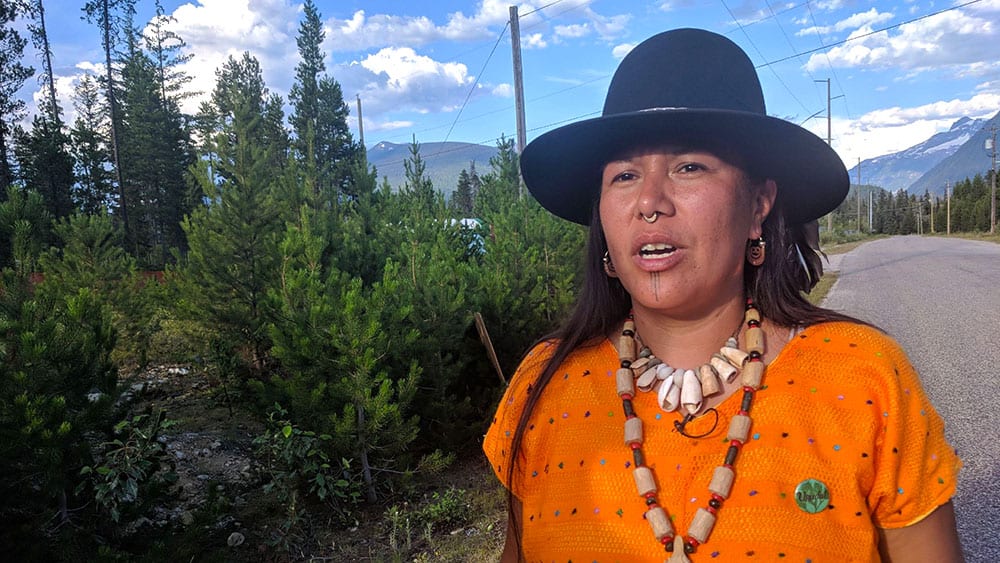


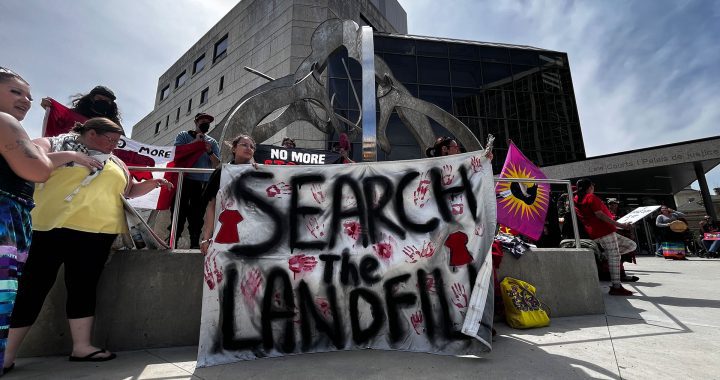
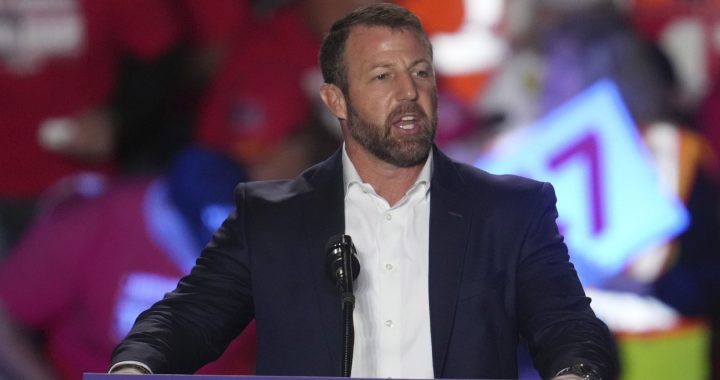
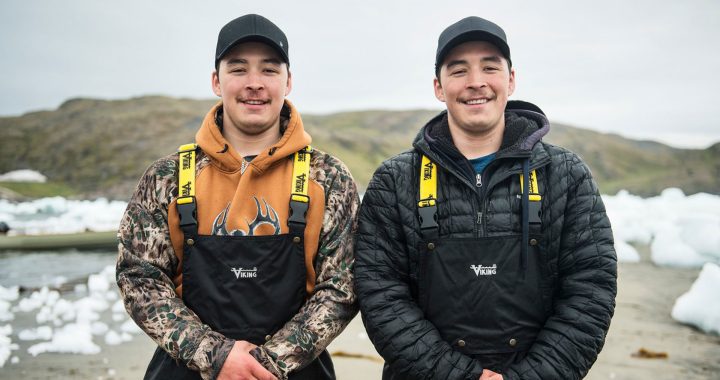


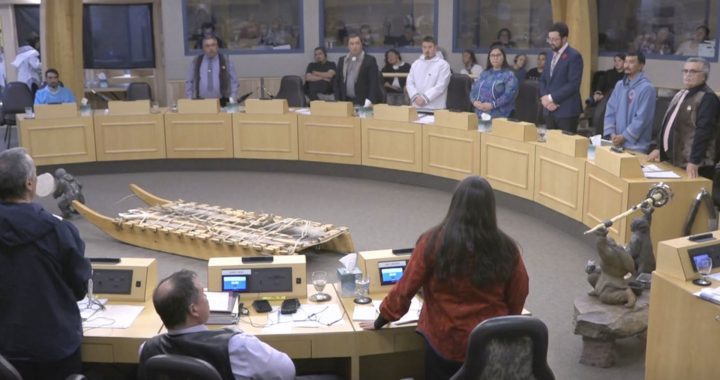
The RCMP should be ashamed of themselves! Have some dignity.
The RCMP should be ashamed of themselves! Have some dignity.